voveran (DICLOFENAC)
- Voveran SR 75 Tablet belongs to a group called NSAIDs. It fights against things in your body that cause pain and swelling. It's often part of different medicines designed for specific purposes.
It redu... See More

What is Voveran?
Voveran is a non-steroidal anti-inflammatory drug, or NSAID, used to relieve pain and reduce inflammation. It works by blocking substances in the body that cause pain and swelling. Voveran is commonly used to treat conditions like arthritis, which is joint inflammation, and other musculoskeletal disorders. It's also used for acute pain, such as that from injuries or surgery. Voveran can be used alone or with other therapies to manage pain and inflammation. Always use Voveran as directed by your healthcare provider to ensure safe and effective treatment.

What is the usual dose of Voveran?
The usual starting dose of Voveran for adults is 50 mg taken two or three times a day. The maximum recommended dose is 150 mg per day. Your doctor may adjust your dose based on your specific condition and response to treatment. For certain conditions, a lower dose may be recommended, especially for the elderly or those with kidney or liver problems. Always follow your doctor's dosing instructions carefully. Do not exceed the recommended dose, as this can increase the risk of side effects. If you have any questions about your dosage, consult your healthcare provider.

How do I take Voveran?
Take Voveran exactly as prescribed by your doctor. It's usually taken once or twice daily, with or without food. Swallow the tablet whole; do not crush or chew it. Taking it with food or milk can help prevent stomach upset. If you miss a dose, take it as soon as you remember unless it's almost time for your next dose. In that case, skip the missed dose and continue your regular schedule. Do not double up on doses. Avoid alcohol while taking Voveran, as it can increase the risk of stomach bleeding. Always follow your doctor's specific instructions.

For how long do I take Voveran?
Voveran is usually used for short-term relief of pain and inflammation. The duration of use depends on your specific condition and response to treatment. For acute pain, you might take Voveran for a few days to a week. For chronic conditions like arthritis, which is joint inflammation, your doctor may recommend longer use. Always follow your doctor's instructions regarding the duration of Voveran use. Stopping the medication without medical advice could cause your symptoms to return. If you have questions about how long to take Voveran, consult your healthcare provider.

What disease or symptom is Voveran used for?
Voveran is used to treat pain and inflammation. It's commonly prescribed for conditions like arthritis, which is joint inflammation, and other musculoskeletal disorders. Voveran helps relieve symptoms like pain, swelling, and stiffness. It's also used for acute pain, such as that from injuries or surgery. Voveran can be used alone or with other therapies to manage pain and inflammation. Always use Voveran as directed by your healthcare provider to ensure safe and effective treatment. If you have questions about its use, consult your doctor for personalized advice.

How long does it take for Voveran to start working?
Voveran starts working within a few hours after you take it. You may begin to feel pain relief and reduced inflammation shortly after taking the medication. The full therapeutic effect can take a few days, especially for chronic conditions like arthritis, which is joint inflammation. Individual factors like your overall health and the severity of your condition can affect how quickly Voveran works. Always take Voveran as prescribed by your doctor for the best results. If you have concerns about how quickly it's working, discuss them with your healthcare provider.

Is Voveran effective?
Voveran is effective for relieving pain and reducing inflammation. It's commonly used to treat conditions like arthritis, which is joint inflammation, and other musculoskeletal disorders. Voveran works by blocking substances in the body that cause pain and swelling. Clinical studies show it significantly reduces pain and improves mobility in people with arthritis. It's also effective for treating acute pain, such as that from injuries or surgery. Always use Voveran as directed by your doctor to ensure the best results. If you have concerns about its effectiveness, discuss them with your healthcare provider.

How do I know if Voveran is working?
Voveran is used to relieve pain and reduce inflammation. You'll know it's working if you notice a decrease in pain and swelling in the affected area. For conditions like arthritis, which is joint inflammation, you might experience improved mobility and less stiffness. If you're taking Voveran for acute pain, such as after an injury, you should feel relief within a few hours. Regular check-ups with your doctor are important to monitor your progress and adjust your treatment if needed. If you have concerns about its effectiveness, discuss them with your healthcare provider.

How does Voveran work?
Voveran works by blocking substances in the body that cause pain and inflammation. It's part of a group of medications called non-steroidal anti-inflammatory drugs, or NSAIDs. Think of it like turning down the volume on a loudspeaker. Voveran reduces the "noise" of pain and swelling by inhibiting enzymes that produce inflammatory chemicals. This helps relieve symptoms like pain, swelling, and stiffness. Voveran is effective for conditions like arthritis, which is joint inflammation, and other musculoskeletal disorders. Always use Voveran as directed by your healthcare provider for safe and effective treatment.

Who should avoid taking Voveran?
Voveran should not be used if you have a known allergy to it or its ingredients. It's contraindicated in people with a history of heart attack, stroke, or severe heart disease, as it can increase cardiovascular risks. Avoid Voveran if you have active stomach ulcers or bleeding. It's not recommended for use before or after heart surgery. Caution is needed in people with kidney or liver problems. Always inform your doctor of your medical history before starting Voveran. They can help determine if it's safe for you and suggest alternatives if needed.

Can I take Voveran with other prescription drugs?
Voveran can interact with several prescription drugs. Taking it with blood thinners like warfarin, which prevents blood clots, can increase bleeding risk. Combining Voveran with other NSAIDs, which are non-steroidal anti-inflammatory drugs, can increase the risk of stomach bleeding. It may also interact with certain blood pressure medications, reducing their effectiveness. Always inform your doctor about all medications you're taking to avoid potential interactions. They can help determine if Voveran is safe for you and suggest alternatives if needed. Regular monitoring and communication with your healthcare provider are important for safe treatment.

Can Voveran be taken safely while pregnant?
Voveran is not recommended during pregnancy, especially in the third trimester. It can affect the baby's heart and blood flow, leading to complications. Limited evidence is available on its safety during pregnancy, so it's best to avoid it unless absolutely necessary. If you're pregnant or planning to become pregnant, talk with your doctor about safer alternatives for managing pain or inflammation. They can help create a treatment plan that protects both you and your baby. Always consult your healthcare provider before taking any medication during pregnancy.

Can Voveran be taken safely while breastfeeding?
Voveran is generally considered safe to use while breastfeeding, but it's important to consult your doctor first. Small amounts of Voveran may pass into breast milk, but it's unlikely to harm a nursing infant. However, if you notice any unusual symptoms in your baby, such as changes in feeding or behavior, contact your healthcare provider. They can help determine if Voveran is the cause and suggest alternatives if needed. Always inform your doctor about all medications you're taking while breastfeeding to ensure your treatment is safe for both you and your baby.

Is Voveran safe for the elderly?
Elderly individuals are more vulnerable to the side effects of Voveran, such as stomach bleeding, kidney problems, and cardiovascular risks. Voveran can be used in the elderly, but with caution. Lower doses may be recommended, and regular monitoring is important to ensure safety. The elderly should be aware of the increased risk of adverse effects and report any unusual symptoms to their doctor. Always consult a healthcare provider before starting Voveran to ensure it's appropriate for your health needs. They can help determine the safest and most effective treatment plan.

How should I store Voveran?
Store Voveran at room temperature, away from moisture and light. Keep it in a tightly closed container to protect it from damage. Avoid storing it in humid places like bathrooms, as moisture can affect its effectiveness. If your medication came in packaging that isn't child-resistant, transfer it to a container that children can't easily open. Always store Voveran out of children's reach to prevent accidental ingestion. Check the expiration date regularly and properly dispose of any unused or expired medication. Follow your pharmacist's instructions for safe storage of Voveran.

Does Voveran make people tired or drowsy?
Voveran can occasionally cause tiredness or drowsiness, but these side effects are not common. Most people take this medication without feeling unusually tired. If you notice you're feeling very sleepy or fatigued while taking Voveran, talk with your doctor. Your tiredness might be caused by something else, like another medication you're taking, or an underlying health condition. Your doctor can help determine what's causing your symptoms and recommend appropriate adjustments to your treatment plan. Proper rest, regular physical activity, and a balanced diet can help maintain your energy levels.

Does Voveran cause stomach upset?
Yes, Voveran can cause stomach upset, including nausea, vomiting, or abdominal pain. These side effects are occasional and usually mild to moderate. Taking Voveran with food or milk can help reduce stomach discomfort. If you experience severe or persistent stomach issues, contact your doctor. They can help determine if Voveran is the cause and suggest ways to manage these effects. It's important to address any new or worsening symptoms with your healthcare provider to ensure your treatment plan is effective and safe. Always follow your doctor's advice when taking Voveran.

Does Voveran affect sleep?
Voveran doesn't typically cause sleep problems. Most people take this medication without experiencing any changes in their sleep patterns. Sleep disturbances aren't listed as a known side effect of Voveran. If you notice changes in how well you sleep after starting this medication, talk with your doctor. Sleep problems might be related to something else, like another medication you're taking or a different health condition. Your doctor can help figure out what's causing your sleep issues and suggest ways to improve your rest while continuing your treatment.

Does Voveran make it hard to think or concentrate?
Voveran doesn't typically cause thinking problems or concentration difficulties. Most people take this medication without experiencing any changes in their mental focus or memory. Cognitive issues like confusion or trouble concentrating aren't listed as known side effects of Voveran. If you notice problems with your thinking after starting this medication, talk with your doctor. These symptoms might be related to something else, such as another medication or health condition. Your doctor can help determine what's causing these issues and suggest solutions while keeping your treatment plan on track.

Does Voveran affect mood?
Voveran doesn't typically cause mood changes. Most people take this medication without experiencing anxiety, agitation, or other mental health effects. Mood changes aren't listed among the known side effects of Voveran. If you notice changes in your mood or mental well-being after starting this medication, talk with your doctor. These symptoms might be related to something else, like stress or another health condition. Your doctor can help determine what's causing any mental health changes you experience and suggest appropriate support while continuing your treatment.

Does Voveran interfere with sexual function?
Voveran may rarely interfere with sexual function. Some people might experience erectile dysfunction, which is difficulty in getting or keeping an erection, or a loss of libido, which is a reduced interest in sexual activity. These side effects are not common and are usually mild to moderate. If you notice changes in your sexual function while taking Voveran, talk with your doctor. They can help determine if the medication is the cause and suggest ways to manage these effects. It's important to address any concerns with your healthcare provider to ensure your treatment plan is effective and comfortable for you.

Does Voveran affect appetite?
Voveran doesn't typically affect your appetite. Most people taking this medication don't notice changes in how hungry they feel or how much they want to eat. Voveran works by reducing pain and inflammation, and it doesn't directly impact your desire for food. If you notice any unexpected changes in your appetite after starting Voveran, talk with your doctor about these changes. For mild appetite changes, try maintaining regular meal times and eating a balanced diet while taking your medication. Your doctor can help determine if any appetite changes you experience are related to Voveran.

Does Voveran cause weight gain?
Voveran doesn't typically affect body weight. Most people take this medication without noticing changes in their weight. Voveran works by reducing pain and inflammation, and it doesn't directly impact your appetite or metabolism. If you notice unexpected weight changes while taking Voveran, talk with your doctor. These changes might be related to another cause, such as a change in activity level or diet. Your doctor can help determine if Voveran is related to your weight changes and suggest appropriate solutions. Always discuss any concerns about weight with your healthcare provider.

Does Voveran cause headaches?
Voveran can occasionally cause headaches. This side effect is not very common and is usually mild to moderate. If you experience a headache while taking Voveran, staying hydrated and resting may help. Over-the-counter pain relievers can also be used, but check with your doctor first. If headaches persist or become severe, contact your healthcare provider. They can help determine if Voveran is the cause and suggest appropriate treatment. It's important to address any new or worsening symptoms with your doctor to ensure your treatment plan is effective and safe.

Does Voveran limit driving?
Voveran might affect your ability to drive safely in some cases. It can cause dizziness or drowsiness, especially when you first start taking it. If you feel dizzy or lightheaded after taking Voveran, avoid driving until these symptoms go away. Pay attention to how your body responds before getting behind the wheel. Even if you feel fine at first, continue to monitor yourself for any new symptoms that could affect your driving. Talk with your doctor about any concerns you have about driving while taking Voveran, especially if you notice any unusual symptoms.

Is it safe to drink alcohol while taking Voveran?
It's best to avoid alcohol while taking Voveran. Alcohol can increase the risk of stomach bleeding and ulcers, which are potential side effects of Voveran. Drinking alcohol can also worsen liver problems, especially if you take Voveran long-term. If you choose to drink occasionally, limit your alcohol intake and watch for warning signs like stomach pain, nausea, or vomiting. These symptoms could indicate stomach bleeding and require immediate medical attention. Talk with your doctor about alcohol use while taking Voveran to get personalized advice based on your specific health situation.

Is it safe to drink coffee or tea while taking Voveran?
You can drink coffee and tea while taking Voveran, as there's no known interaction between caffeine and Voveran. However, both caffeine and Voveran can cause stomach irritation. Drinking too much coffee or tea might increase your risk of stomach upset, which is a side effect of Voveran. Try to enjoy caffeinated drinks in moderation and make sure you drink plenty of water throughout the day. If you experience stomach discomfort, talk with your doctor. They can help determine if caffeine is contributing to your symptoms and suggest ways to manage them.

Is it safe to exercise while taking Voveran?
You can exercise while taking Voveran, but be mindful of your body's response. Voveran can cause dizziness or stomach upset, which might affect your ability to exercise comfortably. If you experience these symptoms, slow down or stop exercising and rest. Drink plenty of water to stay hydrated, especially during physical activity. Avoid strenuous activities or high-impact sports if you feel unwell. Most people can maintain their regular exercise routine while taking Voveran, but check with your doctor if you have concerns about your specific situation. They can provide personalized advice for safe exercise.

What are the most common side effects of Voveran?
Side effects are unwanted reactions to a medication. Common side effects of Voveran include stomach pain, nausea, and diarrhea. These occur in a small percentage of people and are usually mild. Some people may also experience dizziness or headache. If you notice new symptoms after starting Voveran, they might be temporary or unrelated to the medication. Talk with your doctor before stopping any medication. They can help determine if the side effects are related to Voveran and suggest ways to manage them. Always follow your doctor's advice for safe and effective treatment.

Does Voveran have adverse effects?
Adverse effects are unwanted reactions to a medication. Voveran can cause side effects like stomach pain, nausea, or dizziness. These are common and usually mild. Serious adverse effects include heart attack, stroke, or stomach bleeding, which are rare but require immediate medical attention. If you notice any new or worsening symptoms, contact your doctor. They can help determine if Voveran is the cause and suggest appropriate action. Always inform your healthcare provider about any side effects you experience to ensure your treatment is safe and effective.

Is Voveran addictive?
Voveran is not considered addictive or habit-forming. It does not cause dependency or withdrawal symptoms when you stop taking it. Voveran works by reducing substances in the body that cause pain and inflammation, and it does not affect brain chemistry in a way that leads to addiction. You won't experience cravings for Voveran or feel compelled to take more than prescribed. If you have concerns about medication dependence, you can feel confident that Voveran doesn't carry this risk. Always use Voveran as directed by your healthcare provider to manage your condition safely.

Does Voveran have any safety warnings?
Yes, Voveran has important safety warnings. It can increase the risk of serious cardiovascular events, such as heart attack or stroke, especially with long-term use or in people with heart disease. It may also cause stomach bleeding or ulcers, particularly in older adults or those with a history of stomach issues. Voveran can affect kidney function, so regular monitoring may be needed. Avoid using Voveran before or after heart surgery. If you experience chest pain, weakness, slurred speech, or breathing problems, seek emergency help. Always follow your doctor's advice and report any unusual symptoms.

Is it safe to stop Voveran?
Voveran is often used for short-term relief of pain and inflammation. Stopping it suddenly is generally safe, but your symptoms may return. If you're using Voveran for a chronic condition, consult your doctor before stopping. They might suggest a gradual reduction or an alternative treatment to manage your symptoms. Stopping Voveran without medical advice could lead to a return of pain or inflammation. Always talk with your doctor before making changes to your medication regimen. They can help ensure any changes are safe and effective for your health needs.

How do I dispose of Voveran?
To dispose of Voveran, take it to a drug take-back program or collection site at a pharmacy or hospital. They will dispose of it properly to prevent harm to people or the environment. If you can't find a take-back program, you can throw it in the trash at home. First, remove it from its original container, mix it with something undesirable like used coffee grounds, seal the mixture in a plastic bag, and throw it away. This helps prevent accidental ingestion by children or pets. Always follow local guidelines for medication disposal.

What are Voveran possible harms and risks?
Common side effects of Voveran include gastrointestinal issues like nausea and diarrhea, dizziness, and headaches. Serious adverse effects can include cardiovascular events and gastrointestinal bleeding. Consult your doctor if you experience severe symptoms.
Available in 11 variations
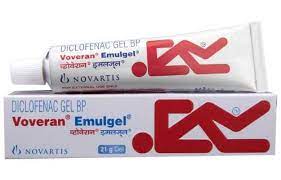
Voveran Emulgel 50gm
Diclofenac (1.16% w/w)
tube of 1 gel
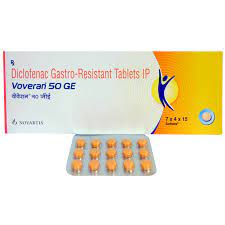
Voveran 50 GE Tablet
Diclofenac (50mg)
strip of 15 gelatin coated tablets

Voveran 1.16% Emulgel 50gm
Diclofenac (1.16% w/w)
tube of 50 gm Gel

Voveran 100mg Tablet SR
Diclofenac (100mg)
strip of 15 tablets
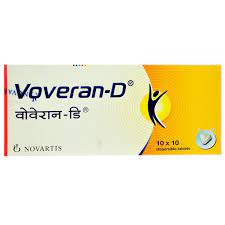
Voveran D 50mg Tablet DT
Diclofenac (50mg)
strip of 10 tablet dt
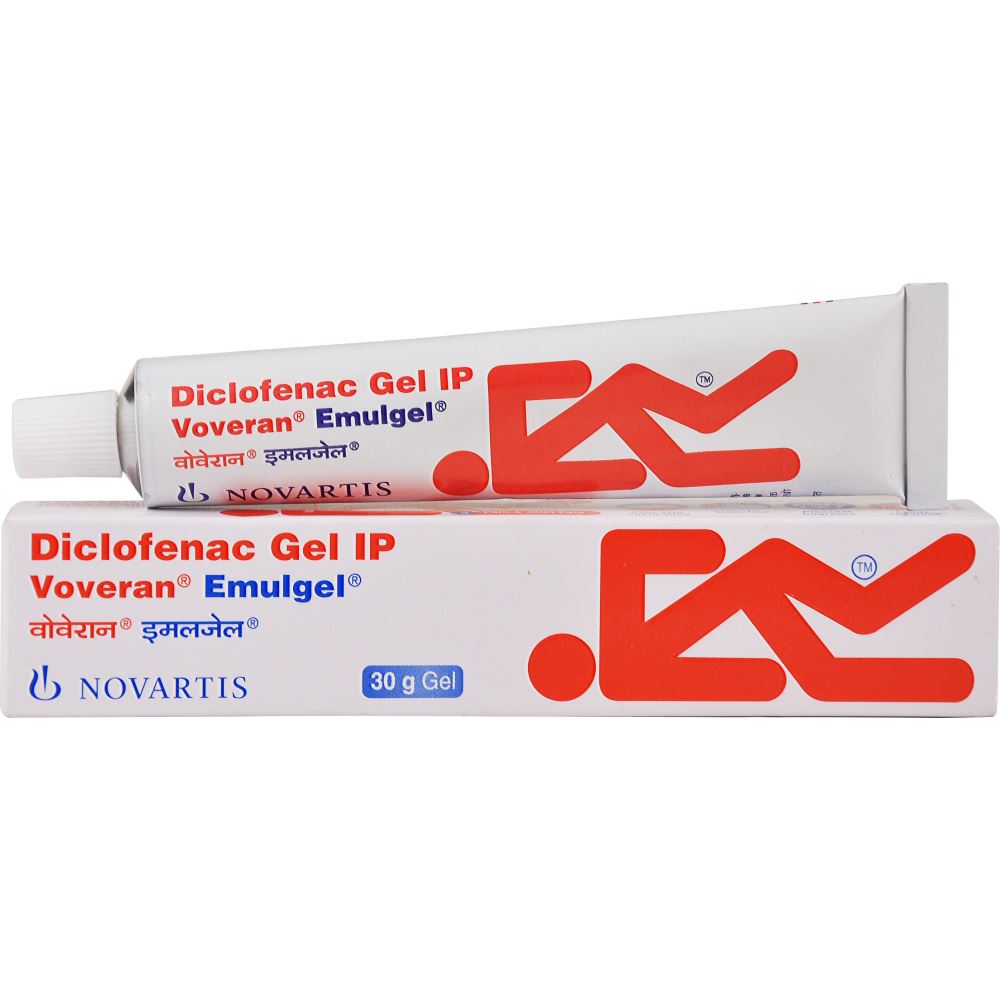
Voveran Emulgel 30gm
Diclofenac (1.16% w/w)
tube of 30 gm gel

Voveran 150mg Tablet SR 10s
Voveran 150mg Tablet SR 10s
Diclofenac (150mg)
strip of 10 tablet sr
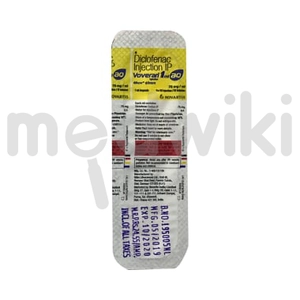
Voveran AQ Injection
Diclofenac (75mg)
ampoule of 1 ml Injection
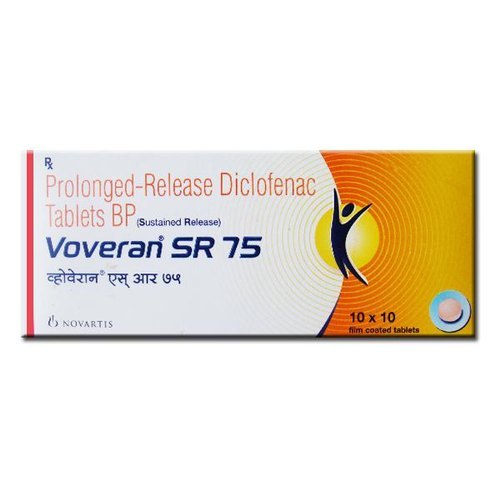
Voveran SR 75 Tablet
Diclofenac (75mg)
strip of 10 tablet pr
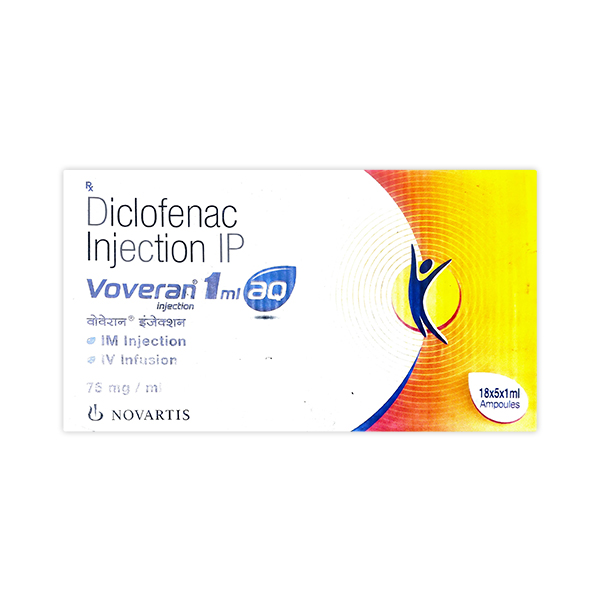
Voveran AQ Injection 1ml
Diclofenac (75mg)
vial of 1 ml Injection
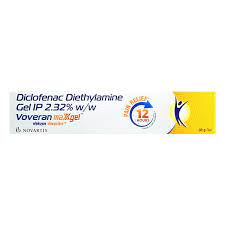
Voveran Max 2.32%w/w Gel 30gm
Diclofenac (2.32% w/w)
tube of 30 gm Gel








.svg)
